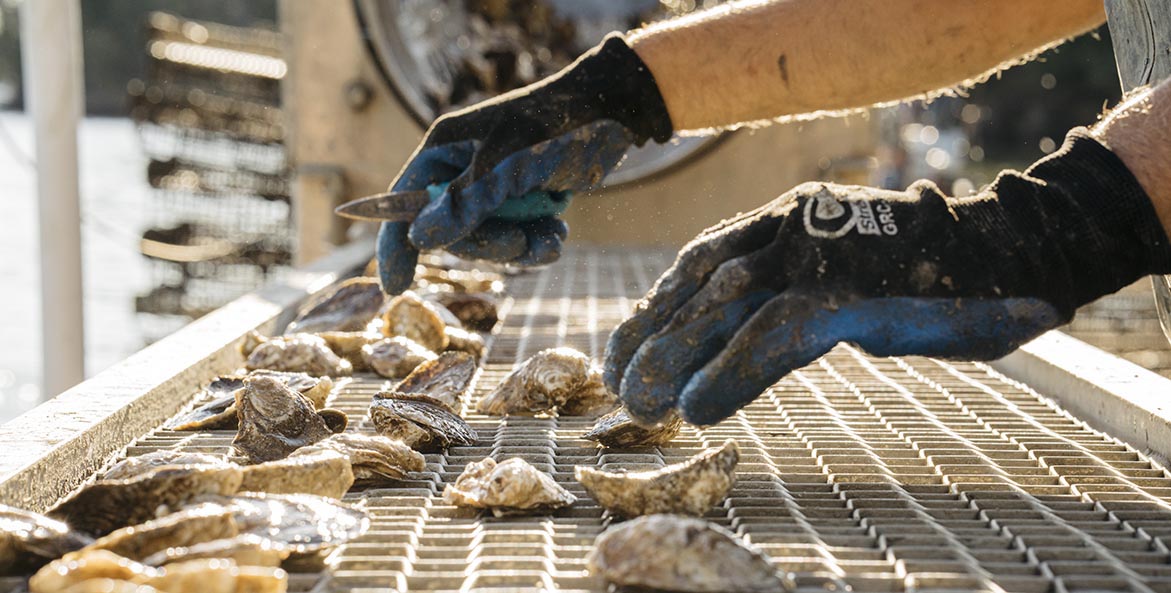As many people in the Chesapeake Bay region evaluated their Thanksgiving plans and menus, which in this area traditionally include oysters, Maryland’s oyster farmers were gathering to discuss the future of the industry that brings many of those oysters to Thanksgiving tables.
In mid-November, more than 160 attendees, including oyster farmers, researchers, and industry experts from 20 U.S. states and four countries, gathered for the 2020 Maryland Shellfish Aquaculture Conference. This year’s virtual event, hosted by the Chesapeake Bay Foundation, University of Maryland Extension, and Maryland Sea Grant, brought together the experts to discuss the top issues facing the shellfish aquaculture industry—in particular, the pandemic.
Thanksgiving is usually one of the busiest times of the years for Maryland’s oyster farmers. Unfortunately, shellfish farmers in the Bay region have been hard-hit by the impacts of the coronavirus pandemic. With restaurants and bars limited in capacity or closed to stem the spread of the virus, oyster farmers, who typically sell more than 90 percent of their oysters to restaurant operators, were left without a market nearly overnight.
These challenges have forced many oyster farmers to quickly switch up their operations and marketing to find new revenue sources while they wait for traditional markets to rebound. Panelists shared lessons learned on cold shipping, farmers market sales, and the future of value-added products for retail grocery stores, such as pre-breaded oysters for frying. Panelists also discussed available funding opportunities for new and expanding aquaculture businesses and how to enroll in specialty crop insurance programs to protect their investments.
In addition to addressing pandemic-related challenges, panelists were eager to look toward the future and discussed innovations in technology that could improve the aquaculture industry. Those innovations include software to track and manage oyster populations, robots to help tend aquaculture gear, and new processing methods.
The recent approval of oyster aquaculture as a nutrient best management practice by the Chesapeake Bay Program also opens doors for oyster farmers to receive payment for the credits generated by their oyster harvest. When oysters filter algae from the water and turn it into oyster tissue, it removes nutrients such as nitrogen and phosphorus that can fuel the Bay’s dead zone. Panelists discussed how the potential new revenue stream from nutrient credit trading could contribute to the industry’s growth.
The conference’s two keynote speakers—Paul Zajicek, Executive Director of the National Aquaculture Association and Danielle Blacklock, Director of NOAA Fisheries Office of Aquaculture—provided a national perspective on opportunities to promote and expand the shellfish aquaculture industry. From meeting with federal regulators and congressional staff to actively participating in the development of Aquaculture Opportunity Areas, the keynote speakers stressed the importance of growers staying engaged in policy discussions.
Despite the hardships of the past year, the stories and lessons learned shared at this year’s conference highlighted the resilience and tenacity of oyster farmers and the shellfish aquaculture industry. Every day, these hard-working men and women are working to bring delicious local oysters to your table. Take a look at how you can support your local oyster farmer.
Check out the recordings of the 2020 Maryland Shellfish Aquaculture Conference.




